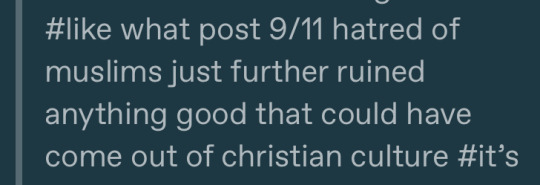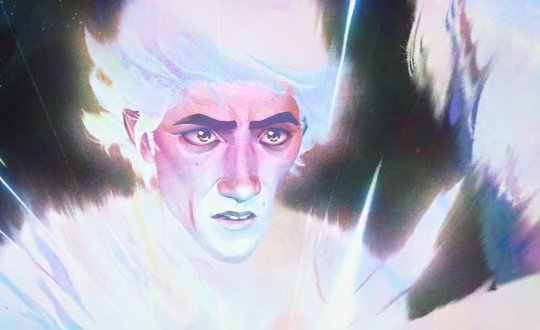#Endemism
Explore tagged Tumblr posts
Text

Sometimes you'll see a species listed as "endemic" to a certain area. That means that it lives in that place and nowhere else! Some species are "microendemic", meaning they live in only one tiny area. This species, Polianthes zapopanensis, isn't quite a microendemic, but it's pretty close - it only lives in a small area of Jalisco, Mexico, near Guadalajara (and its namesake, Zapopan). It was just described in 2011! Even in well-populated areas, there are more interesting plants to find.
121 notes
·
View notes
Link
1 note
·
View note
Text

Lilium auratum var. rubrovittatum
1K notes
·
View notes
Text

#post pandemic#endemic#this hits especially hard after leaving college and not yet finding work#or in my case specifically work in which I get to work on site with other people#after the past three years I don't want to work from home ever again#endemism
1 note
·
View note
Text

new lizard friend from Monster Hunter Wilds! 🦎
202 notes
·
View notes
Text

I think 9/11 is a little bit too late on the mark for this one. like I think the international pedophilia operations and centuries of colonialism and genocide is probably what made it bad
#not disputing the islamophobia! but that is just simply endemic to christianity#US Christianity no less. literally pure evil lol
411 notes
·
View notes
Text
Y'all remember that post I made about endemic species and Central Kentucky, how you'd expect there to be species unique to the area but there aren't, and speculating that early colonization of the Americas wiped them out before they could be described?
And then I speculated that those undiscovered species could be hanging on somewhere?
WELL GUESS WHAT! THEY FOUND ONE
Trifolium kentuckiense is a species of clover found nowhere in the world but in Central Kentucky and it was totally overlooked until recently
THIS MEANS THERE COULD BE MORE
2K notes
·
View notes
Text
We're doing a Lord of the Rings movie marathon tomorrow, which will be the first time I've watched the whole trilogy in one sitting. To celebrate, I decided to make a full day of hobbit meals to eat as we watch.
I apologize in advance, but I need a place to geek out about my Book Accurate Shire Cuisine, so this is going to temporarily become a food blog for a few hours tomorrow.
#tolkiens worldbuilding is so granular you can read about the ecology and endemic foods of each part of middle earth#which i did. because i like research and cooking.#and it's been a lot of fun#off topic#not witchcraft#not paganism#lord of the rings#lotr#cooking#mine
171 notes
·
View notes
Text
Viktor's (subverted) Aristotelian Tragedy
A common sentiment I’m seeing throughout post-finale Viktor discourse is an understandable concern or distaste for the element of choice lost throughout his story. I know a lot of us – myself included – expected more time spent on his transformation, along with emphasis on the anger/rage/betrayal fueling it. But seeing him allow Singed to “begin the process” in episode 8 reminded me of Arcane’s origins – tragedy. Bear with me for another long analysis :)

Aristotle wrote the following on the tragedy: “A tragedy is the imitation of an action that is serious and also, as having magnitude, complete in itself…with incidents arousing pity and fear, wherewith to accomplish a catharsis of these emotions.” He also emphasized that the true tragic hero couldn’t be perfect, and his downfall into such catharsis-inducing circumstances was reliant on a fatal flaw, oftentimes pride.
Viktor fits this mold, as do many Arcane characters, and it stands to reason that this was intentional since the writing team has reiterated that the show is a tragedy, at its core.
Regarding Viktor’s fatal flaw, I’d argue it’s pride, but it manifests very uniquely. He never makes any grand declarations about his success and doesn’t draw attention to himself in any clear way throughout season one (“Progress Day” comes to mind). Instead, his pride manifests as staunch independence and self-reliance that lead to his downfall; his unwillingness to break his stoic mold arguably led to his use of the Hexcore…so it goes.

Fascinating caveat: Viktor’s pride is a defense mechanism, a necessary tool he built in order to survive and succeed in a hostile environment to people of his station. His self-reliance is increasingly desperate as his illness worsens. He’s cornered by fate but banks on the sanctity of choice at every turn – in season one, Viktor is bound by the conviction that we all have a choice. It’s why he’s so distressed when Jayce makes the wrong one regarding weaponizing Hextech.
“There is always a choice.”
Viktor’s choice to fuse with the Hexcore is the classic Aristotelian fatal flaw moment, the singular incident that opens the flood gates for eventual catharsis. We watch Viktor make an irreparable choice, one that we know to be bad, and endure the repercussions. He then makes the choice to abandon the Hexcore, and end his life, but audiences can’t shake the feeling that those consequences aren’t leaving anytime soon.

So why is Viktor so anti-choice in his final season 2, act 3 form?
Choice is Viktor’s weapon. Pride is what leads him to abusing it. Despite how uncomfortable and depressing it is to watch, Viktor’s slow descent into the Herald is a perfect twist of fate. The Arcane is even so insidious that it meshes with his original intent, to help those suffering in the undercity, while convincing him that their subservience is healing. He becomes responsible for their choices. He knows what’s best because he’s relieving the Gloriously Evolved of their suffering, right? The utopia is for the greater good, yes?

Admittedly, it was really hard watching act 3 Viktor descend fully into his choiceless ethos. But we can still relate it to his tragic flaw – his pride has mushroomed into coldhearted omniscience; not only does he know what’s best for everyone, evolution, but he also has the sense to make the choice for them to supersede their “baser instincts.” The grief we feel upon seeing this perverted, violent version of himself, as far removed from Viktor as possible, is the culmination of Aristotle’s treatise on tragedy. The catharsis is the rock-bottom Machine Herald.
"Choice is false."

But then Arcane decided to basically make Jayvik canon (get out of here, Christian Linke) and destroyed the early drafts of this post. I’m going to rapid-fire this next bit:
Jayce forces Viktor back to life. Viktor has no agency in his season 2 inciting incident. Again, it’s distressing when we mourn his agency, but it remains in accordance with Aristotelian tragedy.

Viktor clings to humanity as long as he possibly can. When Jayce calls out Viktor’s trajectory, alleging that his old partner had died in the Council chamber, whatever is left of Viktor gives way to the Arcane because his last tether has been snapped.

Jayce knows the game – Old Man Jenkins Mage Viktor told him so. Jayce becomes the linchpin in subverting Viktor’s tragedy. He knows what must happen. He understands now.

Machine Herald Viktor is given the chance to undo his fatal flaw, to reverse the catharsis, when he sees Old Man Jenkins Mage Viktor. With Jayce’s help, he takes it.

Given that it’s a version of Viktor who ultimately frees him from himself by empowering Jayce, we can gather that Viktor has liberated himself from his tragedy.

Aristotle’s catharsis is rapidly transformed from something based in release to something healing – Viktor’s tether to humanity returns. He grasps it. The walls of his pride and self-reliance collapse. He accepts Jayce’s help, finally being seen as the full individual he is. Catharsis ensues, for sure, but I don’t think it’s based in the typical tragedy genre.
All this to say, I think Viktor’s arc was, in fact, carefully constructed. He represents the Aristotelian descent into a fatal flaw and that’s very distressing to see unfold, especially since he embodied the tragic hero archetype so well from day one. However, Jayce undoes this narrative and we’re given an incredibly subversive ending that I, personally, never saw coming.

I’m sure that Mage Viktor has a much larger bearing on this analysis than I’m accounting for. But for now, suffice to say that he is Viktor’s way out of the tragedy. TALK ABOUT CHOICE!
This doesn’t erase anyone’s discomfort for Viktor having less and less agency, but I’d like to emphasize the logic and literary precedent behind the story decisions.
PS: here's a quick source I looked at about Aristotelian tragedies. I hope to re-up on Greek tragedies so I can get more specific about the parallels Arcane draws from them.
#wow! big one! thanks for reading if you stuck thru to the end#if you couldn't tell...i am a fan of viktor's entire story#it still doesn't feel fully real to me#and OFC they could have - and should have - spent way more time showing rather than telling#but that's a problem unfortunately endemic to the entire season so i see no point in dwelling too much#i just. i love him#and i will never stop talking about him for as long as i live ok ok#viktor arcane#arcane viktor#jayce talis#jayvik#arcane meta#arcane#arcane season 2#arcane s2#arcane spoilers#also i fucking love old man jenkins mage viktor and nobody will silence me on that front
140 notes
·
View notes
Text

An Illustration of #Seychelles #endemics for @ics_seychelles including Seychelles Paradise Flycatcher, Seychelles Sunbird Seychelles Swiftlet, Seychelles Kestrel, Seychelles Warbler, Seychelles White-eye, Seychelles Bulbul, Seychelles Fody, Seychelles Black Parrot, Seychelles Blue Pigeon, Seychelles Scops Owl, and Seychelles Magpie-Robin.
185 notes
·
View notes
Text


Scabiosa japonica var. alpina
407 notes
·
View notes
Text
Tallying every single tree in the kingdom. Endangered South Asian sandalwood. British war to control the forests. European companies claim the ecosystem. Failure of the plantation. Until the twentieth century, the Empire couldn't figure out how to cultivate sandalwood because they didn't understand that the plant is actually a partial root parasite, so their monoculture approach of eliminating companion species was self-defeating. French perfumes and the creation of "Sandalwood City".
---
Selling at about $147,000 per metric ton, the aromatic heartwood of Indian sandalwood (S. album) is arguably [among] the most expensive wood in the world. Globally, 90 per cent of the world’s S. album comes from India [...]. And within India, around 70 per cent of S. album comes from the state of Karnataka [...] [and] the erstwhile Kingdom of Mysore. [...] [T]he species came to the brink of extinction. [...] [O]verexploitation led to the sandal tree's critical endangerment in 1974. [...]
---
Francis Buchanan’s 1807 A Journey from Madras through the Countries of Mysore, Canara and Malabar is one of the few European sources to offer insight into pre-colonial forest utilisation in the region. [...] Buchanan records [...] [the] tradition of only harvesting sandalwood once every dozen years may have been an effective local pre-colonial conservation measure. [...] Starting in 1786, Tipu Sultan [ruler of Mysore] stopped trading pepper, sandalwood and cardamom with the British. As a result, trade prospects for the company [East India Company] were looking so bleak that by November 1788, Lord Cornwallis suggested abandoning Tellicherry on the Malabar Coast and reducing Bombay’s status from a presidency to a factory. [...] One way to understand these wars is [...] [that] [t]hey were about economic conquest as much as any other kind of expansion, and sandalwood was one of Mysore’s most prized commodities. In 1799, at the Battle of Srirangapatna, Tipu Sultan was defeated. The kingdom of Mysore became a princely state within British India [...]. [T]he East India Company also immediately started paying the [new rulers] for the right to trade sandalwood.
British control over South Asia’s natural resources was reaching its peak and a sophisticated new imperial forest administration was being developed that sought to solidify state control of the sandalwood trade. In 1864, the extraction and disposal of sandalwood came under the jurisdiction of the Forest Department. [...] Colonial anxiety to maximise profits from sandalwood meant that a government agency was established specifically to oversee the sandalwood trade [...] and so began the government sandalwood depot or koti system. [...]
From the 1860s the [British] government briefly experimented with a survey tallying every sandal tree standing in Mysore [...].
Instead, an intricate system of classification was developed in an effort to maximise profits. By 1898, an 18-tiered sandalwood classification system was instituted, up from a 10-tier system a decade earlier; it seems this led to much confusion and was eventually reduced back to 12 tiers [...].
---
Meanwhile, private European companies also made significant inroads into Mysore territory at this time. By convincing the government to classify forests as ‘wastelands’, and arguing that Europeans would improves these tracts from their ‘semi-savage state’, starting in the 1860s vast areas were taken from local inhabitants and converted into private plantations for the ‘production of cardamom, pepper, coffee and sandalwood’.
---
Yet attempts to cultivate sandalwood on both forest department and privately owned plantations proved to be a dismal failure. There were [...] major problems facing sandalwood supply in the period before the twentieth century besides overexploitation and European monopoly. [...] Before the first quarter of the twentieth century European foresters simply could not figure out how to grow sandalwood trees effectively.
The main reason for this is that sandal is what is now known as a semi-parasite or root parasite; besides a main taproot that absorbs nutrients from the earth, the sandal tree grows parasitical roots (or haustoria) that derive sustenance from neighbouring brush and trees. [...] Dietrich Brandis, the man often regaled as the father of Indian forestry, reported being unaware of the [sole significant English-language scientific paper on sandalwood root parasitism] when he worked at Kew Gardens in London on South Asian ‘forest flora’ in 1872–73. Thus it was not until 1902 that the issue started to receive attention in the scientific community, when C.A. Barber, a government botanist in Madras [...] himself pointed out, 'no one seems to be at all sure whether the sandalwood is or is not a true parasite'.
Well into the early decades of twentieth century, silviculture of sandal proved a complete failure. The problem was the typical monoculture approach of tree farming in which all other species were removed and so the tree could not survive. [...]
The long wait time until maturity of the tree must also be considered. Only sandal heartwood and roots develop fragrance, and trees only begin developing fragrance in significant quantities after about thirty years. Not only did traders, who were typically just sailing through, not have the botanical know-how to replant the tree, but they almost certainly would not be there to see a return on their investments if they did. [...]
---
The main problem facing the sustainable harvest and continued survival of sandalwood in India [...] came from the advent of the sandalwood oil industry at the beginning of the twentieth century. During World War I, vast amounts of sandal were stockpiled in Mysore because perfumeries in France had stopped production and it had become illegal to export to German perfumeries. In 1915, a Government Sandalwood Oil Factory was built in Mysore. In 1917, it began distilling. [...] [S]andalwood production now ramped up immensely. It was at this time that Mysore came to be known as ‘the Sandalwood City’.
---
Text above by: Ezra Rashkow. "Perfumed the axe that laid it low: The endangerment of sandalwood in southern India." The Indian Economic and Social History Review, Volume 51 (2014), Issue 1, pages 41-70. First published online 10 March 2014. DOI: 10.1177/0019464613515533 [Bold emphasis and some paragraph breaks/contractions added by me. Italicized first paragraph/heading in this post added by me. Presented here for commentary, teaching, criticism purposes.]
#a lot more in full article specifically about#postindependence indian nationstates industrial extraction continues trend established by british imperial forestry management#and ALSO good stuff looking at infamous local extinctions of other endemic species of sandalwood in south pacific#that compares and contrasts why sandalwood survived in india while going extinct in south pacific almost immediately after european conques#abolition#ecology#imperial#colonial#landscape#indigenous#multispecies#tiger#tidalectics#archipelagic thinking#intimacies of four continents#carceral geography#geographic imaginaries#haunted
247 notes
·
View notes
Text

If you have ever been rude to me this is who you're being mean to, btw. If u even care.
#Monster Hunter#bombadgy!!!!!!#it will forever chap my ass that we never got endemic life plushies for MHR
75 notes
·
View notes
Text

A Superb parrot who knows he is superb.
A vulnerable parrot species from Southern Australia, much like many Australian native species, they have suffered due to a destruction of their habitat and the introduction of invasive predatory animals.
375 notes
·
View notes
Note
oh. well this is how i find out...
and i'm worried about people using it for agendas too, especially regarding censorship...
when the news first broke you couldn't go into the tag without getting swamped by wave upon wave of TERFs, all of them using the situation as a springboard to rant about the evils of trans activism. still the case as far as i can tell, although it's less wall-to-wall now. neil gaiman is arguably the most well-known pro-trans/queer creator in the SFF scene, so the backlash is pretty inevitable - it's the same story every time a queer or pro-queer public figure falls from a pedestal, but every time it feels like we're taking a step back.
#neil gaiman#any popular blogger who posts about this will get dogpiled in a matter of hours#go into the notes of any post on the topic and i guarantee you won't have to scroll far before finding scores of radfems#it's endemic
80 notes
·
View notes
Text

We do like being hermits. In fact, we've got a pretty rad insular cult going on up here in our lake.
Quechulac Silverside (Poblana squamata) AKA Charal de Quechulac
endemic to one half-km square crater lake in Puebla, Mexico
Status: Critically Endangered due to its tiny population
---
There were only two photos on the internet with wildly different lighting so I got creative with the coloring.
50 notes
·
View notes